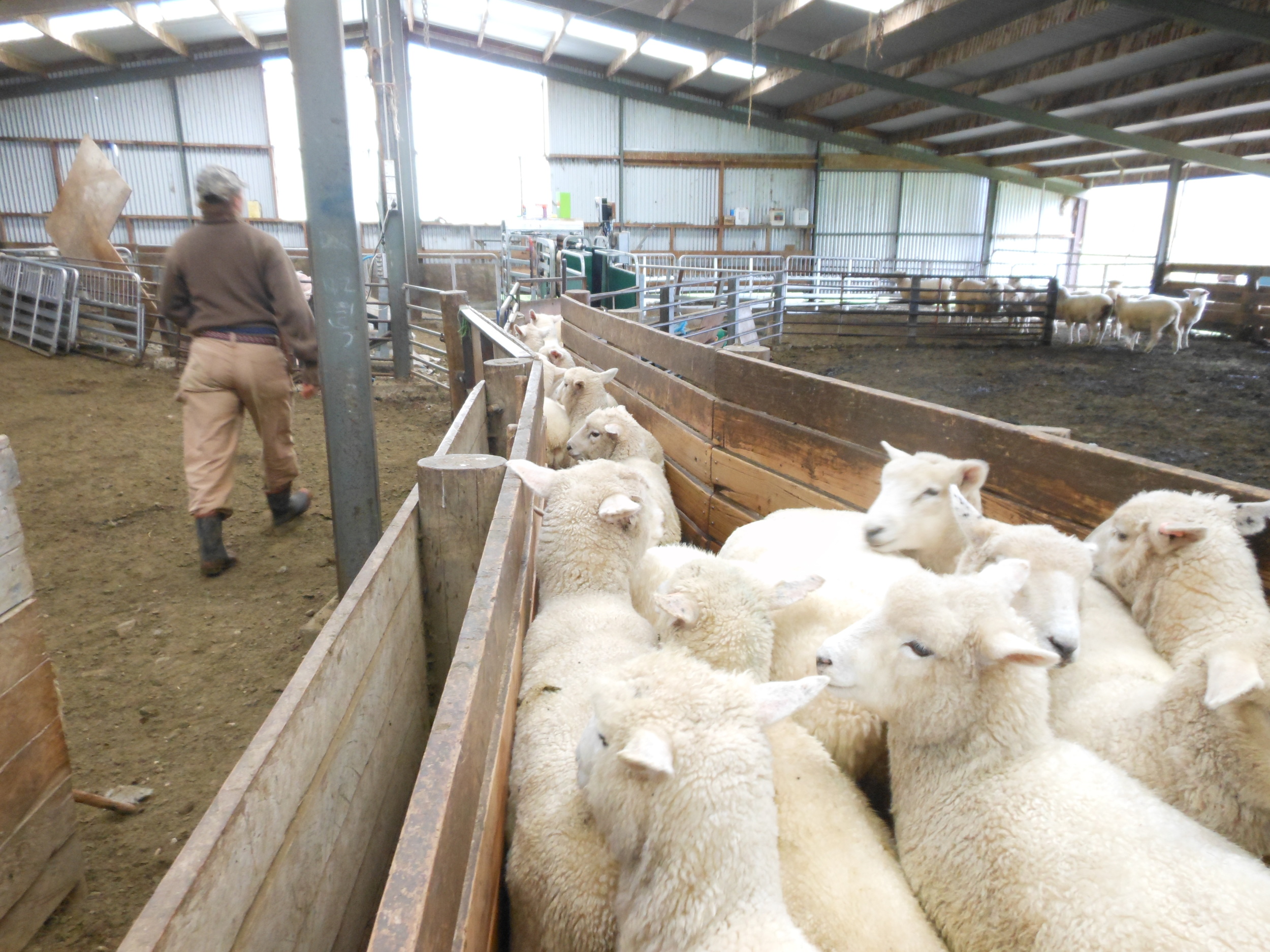Les Morrison
Les Morrison founded the Rosedale Romney stud in 1928 with the sole aim of breeding high production commercial sheep.
rosedale romneys
For 60 years Les managed the Rosedale Romney stud with the breeding objectives of an easy care lambing from a high fertility base, a solid deep carcass to typify the type of Romney he regarded as necessary for lamb growth and ewe flushing, and with a huge emphasis placed on wool style and type Les saw Rosedale Romneys twice win the coveted Golden Fleece of New Zealand.
Over those 60 years Les and son George saw the dual purpose role of the Romney swing between wool and meat as returns and breeding emphasis changed with economic conditions. Wool was bred onto the head, wool was bred off the head, and frozen meat exports to the ‘mother country’ from the Romney dominated New Zealand’s export trade.
Over that period Rosedale Romneys enjoyed a prominent exposure with hundreds of rams sold every year throughout New Zealand and regular exports of Stud Sires to Australia.
Through the 1980s the pre-eminence of the Romney in NZ was beginning to fade challenged by the performance of the new Perendale and Coopworth crosses. Don took over the Romney stud in 1990 and embarked on a breeding programme using the latest technologies of Sire Referencing and Objective Measurement to most accurately gauge the real genetic worth of an animal. Membership in the Southland Otago Romney Group was a huge step forward which allowed 14 member flocks to fast track the genetic gain they were achieving in their Studs. The Southland Otago Romney Group (which later became Alpha Sheep Genetics) became recognised as one of the leading group breeding schemes in New Zealand and was involved in many leading research initiatives.
During this period Rosedale Romneys enjoyed a resurgence with strong ram sales as the high performance focus moved away from the traditional approach to ram breeding.
1998 was a watershed time for Rosedale and the Romney stud as Don evaluated a number of cross breeding options with the opportunity of further lifting commercial production. Rosedale had tried a number of different breed crosses which were giving no gain when they were involved by AgResearch in the evaluation of the Growbulk breed.
Performance from the Growbulk sheep was significantly higher than the base Romney breed which meant a shift in focus towards the new breed. DNA technologies and the incorporation of new production genes into a base breed were opportunities that Rosedale took advantage of however an emphasis was still put on the retention of a high performing Rosedale Romney flock. Rosedale Romneys and Growbulks were farmed together for a 5 year period as a comparison into any heterosis effect that the Growbulks may have been enjoying, however as the relative performance of the Growbulk sheep continued to rise a marked departure from traditional breeding was adopted for the Romneys.
Utilising the superior growth and carcass characteristics from the Growbulk the Romney ewes were crossed with Growbulk rams to provide an injection of the Myomax and Loinmax genes before stabilisation back to the Romney base.
Todays’ Rosedale Romney are a far departure from a traditional Romney however the core Rosedale Romney breed type has simply been developed with a real focus on production genetics, and it gives commercial Romney farmers the chance to lift production and still retain a core Romney sheep.
A lifetime involvement with Stud Romney sheep saw Les rewarded with Life Membership of the NZ Romney Association. Management of the Rosedale flock passed to son George on Les's retirement and subsequently to grandson Don.
““Six generations of Morrisons have farmed the Rosedale property over the last 150 years and it is with a sense of pride that we recognise the developments made to the property and livestock over that period. More than 100 years since Les Morrison founded the Rosedale Stud we still farm with the main aim of breeding high production commercial sheep.””
What We've Achieved
No. 1 NZ rank for Lamb Survival
measuring Lamb Viability at Birth.
Glammies Winner
and 3 times finalist in New Zealand’s Tastiest Lamb
since 2012.SILACE as Trait Leader
for Dual Purpose Meat Yield.
400 sale ram hoggets
tested with 5K SNP Chip(inc Myomax and Loinmax muscling genes.


